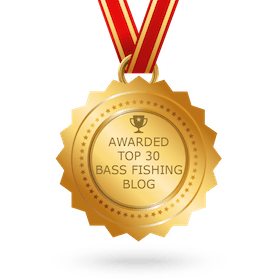Jimmy Ray Tice from Cottondale caught a 5.2-pound shoal bass on the Apalachicola River in Gadsden County at 6:45 a.m. on May 27, 2016. He beat the previous certified state record by more than 5 ounces.
Tice’s shoal bass is the fourth certified state record since March 2015. The certified weight of 5.2 pounds broke the previous record of 4.85 pounds set by Stewart Mayeaux in September 2015. FWC biologist Andy Strickland met with Tice to get an official certified weight and measurements, and to have the application notarized. The official measurements were 21.33 inches in total length with a girth of 14.05 inches.
“Jimmy’s shoal bass is a great catch to add to our state records,” said Strickland, who was able to collect otoliths (ear stones) from the record shoal bass and verified its age at 7 years.

Jimmy Ray Tice fand the 5.2-pound record shoal bass. Florida Fish & Wildlife photo
State records require that a biologist verify the species and have a certified weight for the notarized application. The FWC maintains records for 33 freshwater species. Other state records can be seen at MyFWC.com/Fishing (select “Freshwater” and then “State Record Fish”).
Tice will receive a state record certificate and online recognition on the FWC website, along with a shoal bass Big Catch certificate. Big Catch is a long-standing, family-friendly angler recognition program that awards anglers a certificate if they qualify after submitting a photo of their catch online and if the catch exceeds specified weights or lengths. For more information about the Big Catch program, go to BigCatchFlorida.com.
The most abundant population of shoal bass in Florida exists in the Chipola River between the towns of Marianna (Jackson County) and Altha (Calhoun County). After July 1, 2016, shoal bass will have a protected conservation area that is restricted to catch-and-release from Peacock Bridge to Johnny Boy Landing on the Chipola River. Shoal bass throughout the remainder of the Chipola will fall under the statewide black bass regulation beginning July 1, 2016 – the daily bag limit is five black bass (includes largemouth, Suwannee, shoal, Choctaw and spotted bass), and only one black bass may be 16 inches in total length or longer. Suwannee, shoal, Choctaw or spotted bass less than 12 inches must be released immediately.
– SFN contributing staff reporter Don Gowen











